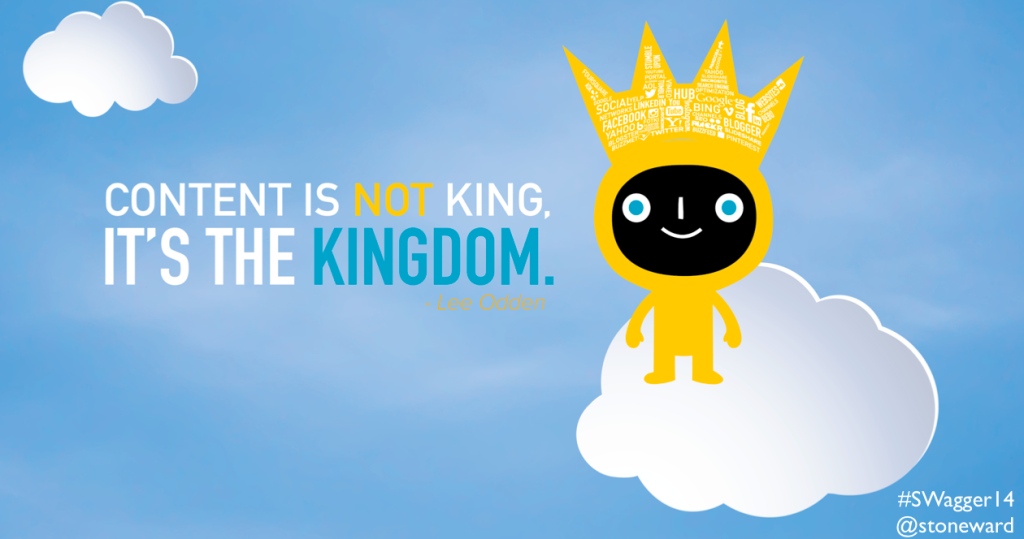Content marketing builds and improves relationships, drives search engine optimization and can ultimately deliver more customers and more sales for businesses that are doing it right. But it can be overwhelming to figure out what to do, where to do it and just in general how to get started. At our annual Digital Swagger event, Stone Ward focused on content marketing with some strong examples of well-done campaigns. In the coming weeks, I will go into detail for segments of this presentation, but to give you the big picture, I have included the full presentation below.
Content marketing is made up of four key elements: the hub, the content, distribution and measurement. Outlined below is a general description of each, and in the presentation are the details.
The Hub
The hub is your website, blog or other digital asset that serves as the home for all content – created or curated. It is the place you link to from your social network shares, the place you put additional information about your business or organization and the place that search engines crawl to direct people to your site when they search relevant topics.
The Content
Content is where most people struggle – finding things to talk about, write about, share, etc. – while keeping it all interesting, relevant and leaving them wanting more. It is a challenge. Start by defining your goals for the content and creating a list of key words and phrases that might be used for searching the type of content that is relevant to your business. From there, consider all the places you might have existing content that could be shared or modified for online distribution: videos, articles, news releases, photo libraries, packaging, annual reports, interviews, testimonials, etc. Create an editorial calendar by topic and start working it.
Distribution
Distribution is actually more important than the content (though you can’t distribute if you don’t have anything to distribute!). There is a stat floating around that marketers like to quote: for every one hour spent creating/curating your content, spend four hours planning and executing distribution. Not every piece of content is right for every distribution channel: each channel has different audiences who expect to consume content in different ways. Email, Twitter, Facebook, Instagram, Pinterest, YouTube – consider the channel and the audience before customizing your content distribution.
Measurement
What gets measured, gets done. Know your goals and what success looks like before you start. Check the performance of your content marketing against those goals at least weekly and use the knowledge you gain to optimize content type and topic, posting time and place, etc. going forward.


